-
 Bitcoin
Bitcoin $107,323.9971
-0.42% -
 Ethereum
Ethereum $2,442.7415
-1.58% -
 Tether USDt
Tether USDt $1.0005
0.00% -
 XRP
XRP $2.0902
-4.49% -
 BNB
BNB $645.3561
-0.33% -
 Solana
Solana $140.8832
-2.81% -
 USDC
USDC $0.9999
0.01% -
 TRON
TRON $0.2713
0.17% -
 Dogecoin
Dogecoin $0.1611
-2.35% -
 Cardano
Cardano $0.5556
-2.75% -
 Hyperliquid
Hyperliquid $36.8045
-1.10% -
 Bitcoin Cash
Bitcoin Cash $494.4393
-1.23% -
 Sui
Sui $2.6406
-2.97% -
 Chainlink
Chainlink $13.0846
-1.74% -
 UNUS SED LEO
UNUS SED LEO $9.0127
0.09% -
 Avalanche
Avalanche $17.4023
-1.37% -
 Stellar
Stellar $0.2339
-3.25% -
 Toncoin
Toncoin $2.8330
-0.57% -
 Shiba Inu
Shiba Inu $0.0...01124
-3.38% -
 Litecoin
Litecoin $84.9229
-0.60% -
 Hedera
Hedera $0.1432
-3.84% -
 Monero
Monero $311.0740
-1.35% -
 Bitget Token
Bitget Token $4.6591
3.94% -
 Dai
Dai $1.0001
0.01% -
 Ethena USDe
Ethena USDe $1.0000
-0.01% -
 Polkadot
Polkadot $3.3033
-1.64% -
 Uniswap
Uniswap $6.9221
-4.55% -
 Pi
Pi $0.5546
-4.86% -
 Aave
Aave $257.5046
-1.30% -
 Pepe
Pepe $0.0...09215
-3.26%
Is it necessary to reduce the position when the KDJ indicator forms a dead cross in the overbought area?
A KDJ dead cross in overbought territory may signal a potential downtrend reversal, but traders should confirm with other indicators and market context before reducing positions.
Jun 27, 2025 at 02:28 pm

Understanding the KDJ Indicator and Its Role in Cryptocurrency Trading
The KDJ indicator is a momentum oscillator widely used in technical analysis, especially within cryptocurrency trading. It consists of three lines: the K-line, D-line, and J-line, which help traders identify overbought and oversold conditions. In crypto markets, where volatility is high, understanding how to interpret this indicator can significantly impact decision-making.
When the KDJ forms a dead cross in the overbought area, it signals a potential reversal from an uptrend to a downtrend. A dead cross occurs when the K-line crosses below the D-line, typically indicating bearish momentum. However, whether this should prompt a trader to reduce their position depends on several factors beyond just the indicator's signal.
The Significance of Overbought Conditions in Crypto Markets
In cryptocurrency trading, overbought conditions are usually identified when the KDJ values rise above 80. This suggests that the asset may be overvalued or over-purchased, increasing the likelihood of a price correction. When combined with a dead cross, this can serve as a strong warning sign for traders holding long positions.
However, due to the speculative nature of crypto assets, prices can remain in overbought territory for extended periods during strong bull runs. Therefore, while a KDJ dead cross in overbought may suggest caution, it shouldn't automatically trigger a sell-off without additional confirmation from other indicators or chart patterns.
Evaluating Market Context Before Reducing Position
Before deciding to reduce position size based on a KDJ dead cross, traders must consider the broader market context. For instance, if Bitcoin or Ethereum is experiencing a strong breakout supported by positive news or macroeconomic trends, a short-term pullback signaled by the KDJ might not indicate a full reversal.
Additionally, analyzing volume patterns, support/resistance levels, and trendlines can provide clarity. If the price remains above a key moving average (like the 50-day or 200-day EMA) despite the KDJ crossing down, it could mean that the uptrend is still intact. Traders should avoid making impulsive decisions solely based on one indicator’s signal.
Combining KDJ Signals with Other Technical Tools
Relying solely on the KDJ indicator can lead to false signals, especially in fast-moving crypto markets. To enhance accuracy, traders often combine it with other tools such as:
- RSI (Relative Strength Index): Confirming overbought conditions using RSI helps filter out noise. If both RSI and KDJ show overbought readings and a bearish crossover, the probability of a reversal increases.
- MACD (Moving Average Convergence Divergence): A bearish MACD crossover alongside a KDJ dead cross strengthens the sell signal.
- Candlestick Patterns: Identifying bearish candle formations like shooting stars, hanging men, or engulfing candles near resistance can further validate the KDJ signal.
By layering these tools, traders can better assess whether a position reduction is warranted or if the signal is part of normal market fluctuation.
Practical Steps to Respond to a KDJ Dead Cross in Overbought Area
If you're considering reducing your position after detecting a KDJ dead cross in overbought territory, follow these practical steps:
- Verify the KDJ Settings: Ensure that the KDJ is set to standard parameters (usually 9-period lookback). Deviating from default settings might distort the signal.
- Check Timeframe Consistency: Look at multiple timeframes (e.g., 1-hour, 4-hour, daily charts) to see if the dead cross appears across all. A confluence of signals increases reliability.
- Assess Volume: A sharp increase in selling volume during the cross supports the bearish outlook. Conversely, low volume might suggest a weak signal.
- Set Stop-Loss Levels: If you decide to hold rather than reduce, adjust stop-loss orders above recent swing highs to protect capital.
- Consider Partial Profit Taking: Instead of closing the entire position, consider taking partial profits to lock in gains while leaving room for potential continuation of the trend.
These steps help ensure that any action taken is well-informed and not driven purely by fear or greed.
Frequently Asked Questions (FAQs)
Q: Can I rely solely on the KDJ indicator for trading decisions in crypto?
A: While the KDJ is a powerful tool, relying on it alone can result in false signals. It’s best used in conjunction with other indicators like RSI, MACD, and volume analysis to confirm trade setups.
Q: How often does the KDJ dead cross in overbought lead to a real trend reversal?
A: There's no fixed frequency, as it varies depending on market conditions and asset type. In highly volatile crypto markets, many KDJ signals may fail due to rapid price swings. Always verify with additional technical tools before acting.
Q: Should I exit my position entirely if the KDJ forms a dead cross in overbought?
A: Not necessarily. You can choose to take partial profits, tighten stop-losses, or wait for further confirmation from price action or other indicators before fully exiting.
Q: What are common mistakes traders make when interpreting KDJ signals?
A: Common mistakes include ignoring market context, failing to check multiple timeframes, not combining KDJ with other indicators, and reacting emotionally to overbought/oversold readings without confirming price behavior.
Disclaimer:info@kdj.com
The information provided is not trading advice. kdj.com does not assume any responsibility for any investments made based on the information provided in this article. Cryptocurrencies are highly volatile and it is highly recommended that you invest with caution after thorough research!
If you believe that the content used on this website infringes your copyright, please contact us immediately (info@kdj.com) and we will delete it promptly.
- Altcoins & Bitcoin in July: What's the Buzz?
- 2025-06-27 17:30:13
- XRP, Cardano, and the Rise of Remittix: What's Happening in the Altcoin World?
- 2025-06-27 17:30:13
- Pi Token, AI Rumors, and Google Partnership: Decoding the Hype
- 2025-06-27 17:35:12
- Dogecoin & Aptos ETF Buzz: SEC Approval Odds Soar!
- 2025-06-27 16:52:14
- Solana (SOL) Price: Navigating Resistance and Support Levels
- 2025-06-27 18:05:57
- NFT Sales Plunge in June: What's Going On?
- 2025-06-27 18:05:57
Related knowledge
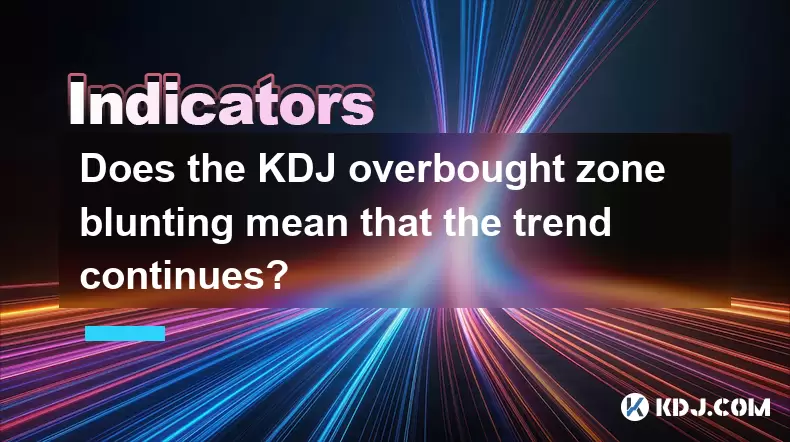
Does the KDJ overbought zone blunting mean that the trend continues?
Jun 27,2025 at 03:35pm
Understanding the KDJ Indicator in Cryptocurrency TradingThe KDJ indicator, also known as the stochastic oscillator, is a popular technical analysis tool used by traders to identify overbought or oversold conditions in asset prices. In the cryptocurrency market, where volatility is high and trends can change rapidly, understanding how to interpret the K...
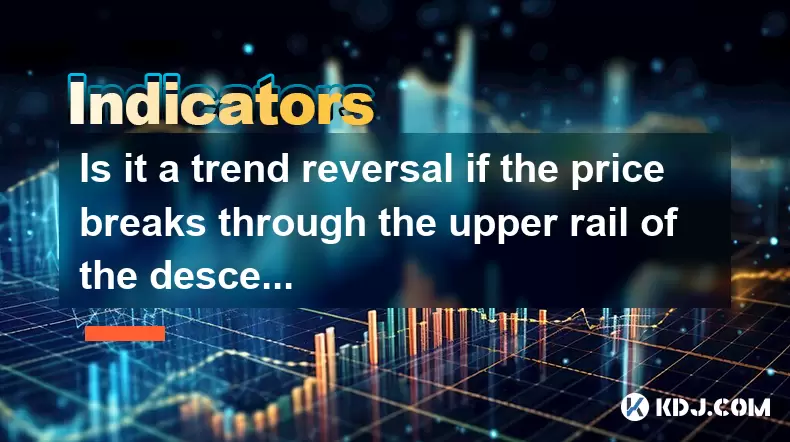
Is it a trend reversal if the price breaks through the upper rail of the descending channel and then steps back without breaking?
Jun 27,2025 at 05:35pm
Understanding the Descending Channel PatternA descending channel is a technical analysis pattern formed by two parallel downward-sloping trendlines, one acting as resistance and the other as support. This pattern typically indicates a continuation of a downtrend, where price action oscillates between these two boundaries. Traders often look for breakout...
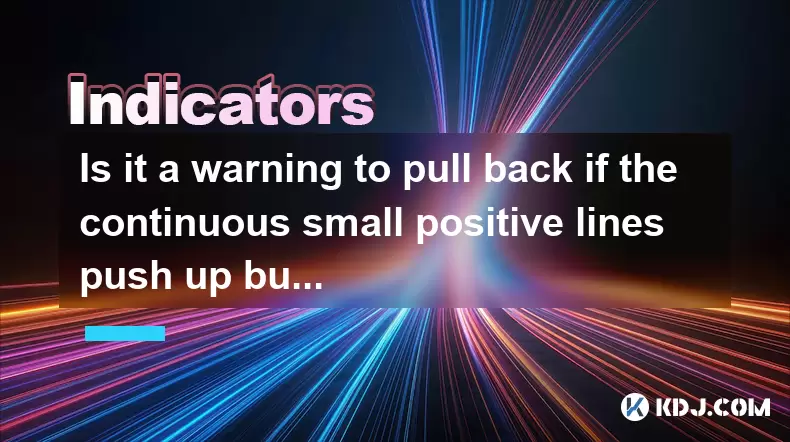
Is it a warning to pull back if the continuous small positive lines push up but the volume is insufficient?
Jun 27,2025 at 05:28pm
Understanding the Pattern: Continuous Small Positive LinesIn technical analysis, continuous small positive lines refer to a series of candlesticks where each candle closes slightly higher than its open. These candles usually have short wicks and indicate a gradual upward movement in price. Traders often interpret this pattern as a sign of steady buying ...
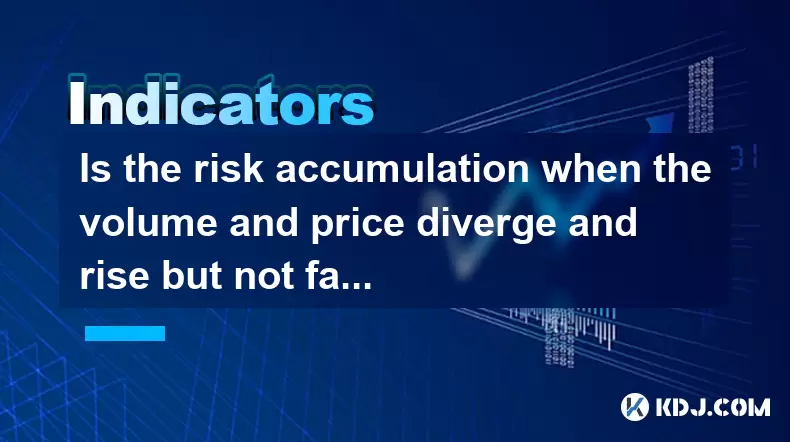
Is the risk accumulation when the volume and price diverge and rise but not fall?
Jun 27,2025 at 04:28pm
Understanding Volume and Price Divergence in Cryptocurrency TradingIn cryptocurrency trading, the relationship between volume and price plays a critical role in identifying market sentiment. When volume increases while price rises, it typically signals strong buying pressure and healthy market participation. However, when this correlation breaks—especia...
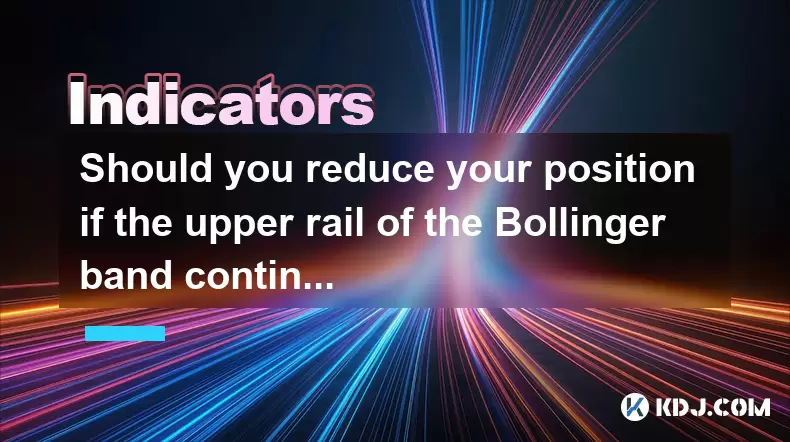
Should you reduce your position if the upper rail of the Bollinger band continues to be under pressure?
Jun 27,2025 at 06:22pm
Understanding the Bollinger Band and Its Upper RailThe Bollinger Band is a widely used technical indicator in cryptocurrency trading. It consists of three lines: a simple moving average (SMA) in the center, with two outer bands representing standard deviations above and below the SMA. The upper rail specifically reflects overbought conditions when price...

Does the CCI indicator break through +200 mean that it is seriously overbought?
Jun 27,2025 at 01:08pm
Understanding the CCI Indicator and Its Relevance in Cryptocurrency TradingThe Commodity Channel Index (CCI) is a technical analysis tool widely used by traders in various financial markets, including cryptocurrency. Originally developed by Donald Lambert for commodities, it has since been adopted across asset classes to identify overbought or oversold ...

Does the KDJ overbought zone blunting mean that the trend continues?
Jun 27,2025 at 03:35pm
Understanding the KDJ Indicator in Cryptocurrency TradingThe KDJ indicator, also known as the stochastic oscillator, is a popular technical analysis tool used by traders to identify overbought or oversold conditions in asset prices. In the cryptocurrency market, where volatility is high and trends can change rapidly, understanding how to interpret the K...

Is it a trend reversal if the price breaks through the upper rail of the descending channel and then steps back without breaking?
Jun 27,2025 at 05:35pm
Understanding the Descending Channel PatternA descending channel is a technical analysis pattern formed by two parallel downward-sloping trendlines, one acting as resistance and the other as support. This pattern typically indicates a continuation of a downtrend, where price action oscillates between these two boundaries. Traders often look for breakout...

Is it a warning to pull back if the continuous small positive lines push up but the volume is insufficient?
Jun 27,2025 at 05:28pm
Understanding the Pattern: Continuous Small Positive LinesIn technical analysis, continuous small positive lines refer to a series of candlesticks where each candle closes slightly higher than its open. These candles usually have short wicks and indicate a gradual upward movement in price. Traders often interpret this pattern as a sign of steady buying ...

Is the risk accumulation when the volume and price diverge and rise but not fall?
Jun 27,2025 at 04:28pm
Understanding Volume and Price Divergence in Cryptocurrency TradingIn cryptocurrency trading, the relationship between volume and price plays a critical role in identifying market sentiment. When volume increases while price rises, it typically signals strong buying pressure and healthy market participation. However, when this correlation breaks—especia...

Should you reduce your position if the upper rail of the Bollinger band continues to be under pressure?
Jun 27,2025 at 06:22pm
Understanding the Bollinger Band and Its Upper RailThe Bollinger Band is a widely used technical indicator in cryptocurrency trading. It consists of three lines: a simple moving average (SMA) in the center, with two outer bands representing standard deviations above and below the SMA. The upper rail specifically reflects overbought conditions when price...

Does the CCI indicator break through +200 mean that it is seriously overbought?
Jun 27,2025 at 01:08pm
Understanding the CCI Indicator and Its Relevance in Cryptocurrency TradingThe Commodity Channel Index (CCI) is a technical analysis tool widely used by traders in various financial markets, including cryptocurrency. Originally developed by Donald Lambert for commodities, it has since been adopted across asset classes to identify overbought or oversold ...
See all articles























































































